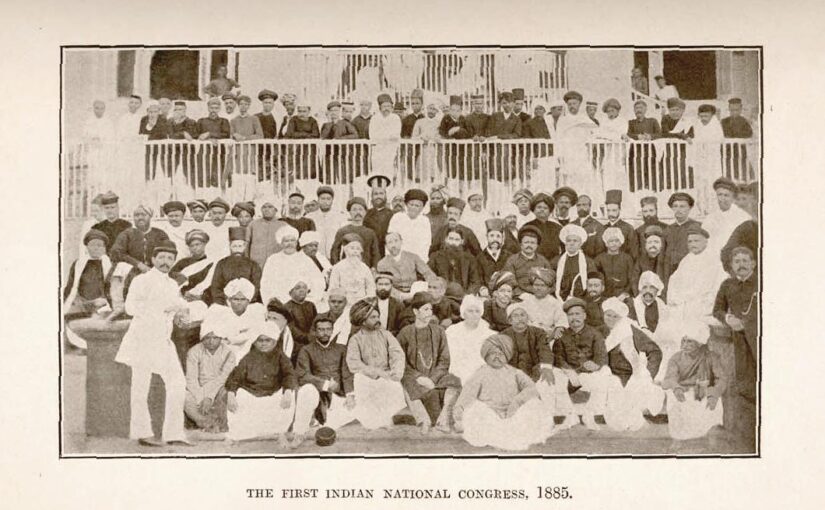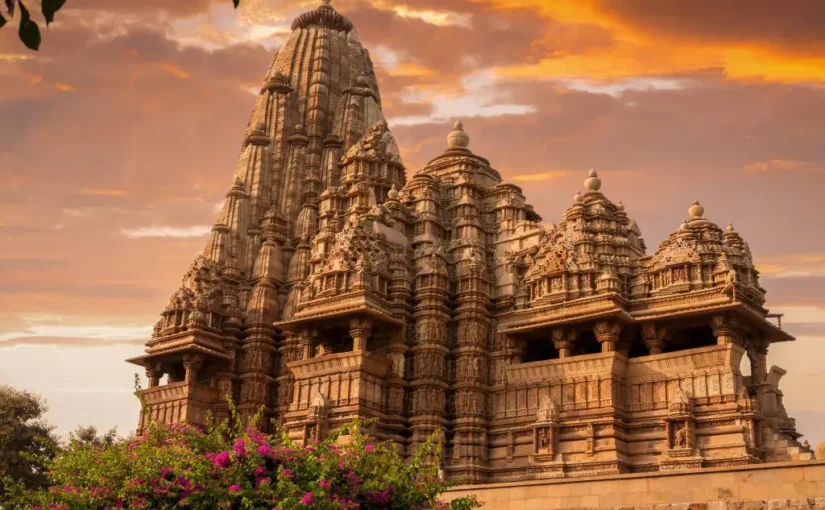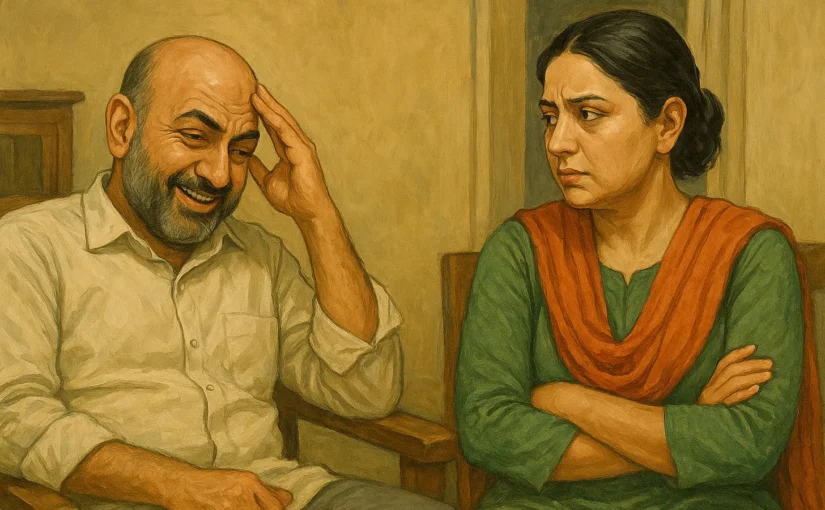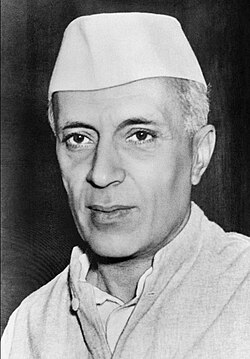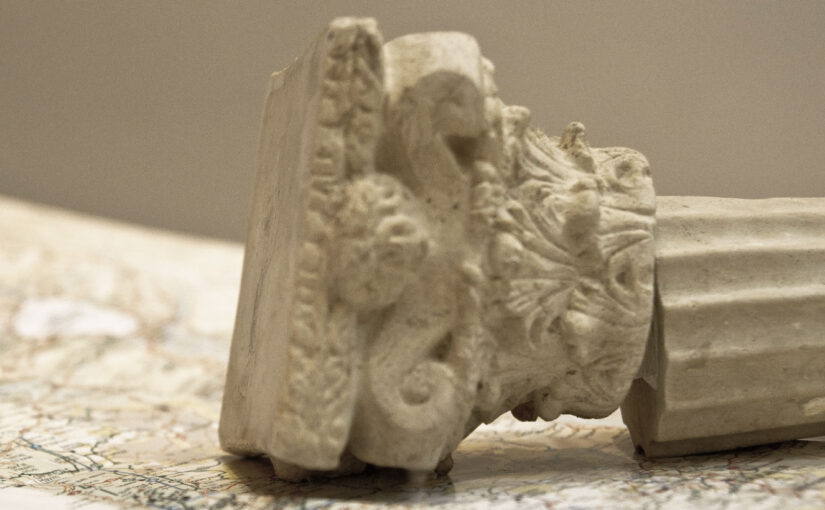This post by X.T.M has brought up some important points that Indians (and, by extension, Hindus) need to wrestle with. The author’s foundational hypothesis is that “India’s central trauma is not diversity. It is Partition.”
I don’t think I’ve ever read such a succinct diagnosis trying to get to the root of India’s issues, much less such a novel one (at least to me). For these reasons, if nothing else, I think X.T.M’s idea merits a deeper look.
I am largely in agreement with the author that diversity in and of itself is not at the heart of India’s troubles if only because it seems to have always been a factor in Indian society for as far back as we have history. Indeed, “diversity” and differentiation seem to me to be a mark of the continuity of Indian civilization from the earliest days of our forefathers. If this, our patrimonial diversity, has become a bane to India, it is to the India that plays at being a modern nation-state, democracy, and republic — not to the India of uncountable Gods, saints, and heroes, each at the heart of their world, ruling over the innumerable hamlets that dot the country and the uncountable kindreds that dwell within them. As Diana Eck (2012) puts it: “The profusion of divine manifestation is played in multiple keys as the natural counterpart of divine infinity, incapable of being limited to any name or form, and therefore expressible only through multiplication and plurality.” (India: A Sacred Geography, p. 48).
It is the second half of the author’s initial hypothesis that I think is the most important bit to dissect. Something about this diagnosis does not strike me as entirely accurate.
It is true that Partition split the Indian folk, namely, Hindus and Muslims, but the shape that this split took is a rather curious and, at least for me, unexpected one. According to the Pew Research Center’s June 29, 2021 report titled Religion in India: Tolerance and Segregation (Sahgal et al.), when asked whether Partition was a good or a bad thing for Hindu-Muslim relations in a 2019 survey, 43% of Indian Hindus saw it as good while 37% of them saw it as bad. Indian Muslims? Quite the opposite. Only a third (30%) of them saw it as helping communal relations while almost half (48%) saw it as actually harmful.
While Partition may have been the bloody birth pangs of the Indian State and been a very real source of deep pain to the actual humans affected by it, what ails the folks of India is, I think, altogether something else. As to what exactly this is, I will come back to it towards the end of this essay.
X.T.M’s second hypothesis is something I actually agree with. such as the idea that the “two peoples” (Hindus and Muslims) could have lived together. We have seen time and time again that incomers to India have, over time, flowed into the great folksea that ebbs and flows upon our lands like trickles of glacial melt joining with the ocean, at once both one and sundry.
There is data to support this as well. In the same Pew report I cited above (Sehgal et al., 2021), the researchers found that while both Hindus and Muslims wish for segregation in their personal lives, as can be seen in the high percentage (over two-thirds) of both groups who want to stop intermarriage, the fact that most Indians’ friends tend to be from their own religious communities, and 45% of Hindus would not want a neighbour from at least one of the other major religions (Hindu, Sikh, Jain, Buddhist, Muslim, & Christian) — a figure matched by 36% of Muslims, when it comes to what folks believe, there seems to be a surprising degree of similarity that crosses religious lines. The report revealed that an equal percentage of Indian Muslims believed in karma as did Indian Hindus (77%), along with over half of Indian Christians (54%), two-thirds of Buddhists and Sikhs, and 75% of Jains. Around one-third of Muslims and Christians said they believed in reincarnation as opposed to (and I found this very weird) only 40% of Hindus, 18% of Buddhists and Sikhs, and 23% of Jains). A similar level of belief in the purifying power of the Ganga was found among the two Abrahamic faiths. Needless to say that none of these ideas could be considered orthodox doctrine in any tradition of Islam or Christianity, and any adherence to them by followers of those religions in India immediately opens up a flood of questions one could ask.
Could it be the result of a superimposition of a Muslim or Christian layer onto a Hindu-Buddhist base such as happens when a linguistic superstrate is built atop a conquered population leading to the adoption of vocabulary and grammatical features from the linguistic substrate? Or, could it be like the speculated spread of retroflex consonants, which, while found in languages in many parts of the world, are particularly concentrated in India? Perhaps it’s a consequence of Hindu demographic domination over the last several decades causing it to serve as a sort of ‘prestige dialect’ among Indian religions? In any case, I don’t think we can discount the probability that a generally convivial attitude between Hindus and Muslims could have been maintained prior to Partition.
As such, I am generally in agreement with X.T.M’s argument that what happened was largely because of the will of the political elite. What I do take issue with is the rather ludicrous oversimplification of the so-called ‘Hindu’ side as the “Brahminical–Congress elite”, not only because it is patently untrue in terms of the actual people who led the Congress. Let’s take a look at some of the founding and early members. There are:
Bengali Brahmins
- S. Banerjee (Rarhi Kulin)
- W.C. Bonnerjee (Rarhi Kulin)
Bengali Kayasthas
- A.M. Bose
- B.C. Pal
- R.C. Dutt
- Sri Aurobindo
Western Indian Brahmins
- B.G. Tilak (Chitpavan)
- G.K. Gokhale (Chitpavan)
- K.T. Telang (Gaud Saraswat)
- M.G. Ranade (Chitpavan)
Muslims
- B. Tyabji (Sulaimani Bohra, of Arab descent),
Parsis:
- D. Naoroji
- D.E. Wacha
- P. Mehta
Southern Indian Brahmins
- C. Vijayaraghavachariar (Iyengar)
- G.D.S Iyer
- P. Anandacharlu (Telugu, adopted by a Tamil Brahmin in Madras)
- S.S. Iyer
Others
- L.L. Rai (Agrawal Jain, Punjab)
- S.R. Mudaliar (Sengunthar, Chola vassals & merchant guilders, Tamil)
- V.O.C. Pillai (Vellalar, powerful tribe in society & politics, Tamil)
By focusing on the ‘Brahminical’ nature of the Indian National Congress, X.T.M papers over the very real internal differences between these Brahmins — for example, the fact that Gaud Saraswat Brahmins have historically had their status contested by their neighbors to the north in Marathi lands and to the south in Malayali ones, or the sectarian distinctions between Iyers and Iyengars. This sort of ‘unionism’ is as pernicious when applied by outsiders as it is by insiders to the Hindu fold because it flattens out the differences given to us by the Gods and our Fathers. Worse, such oneness only makes us easier to be understood, governed, and thus, captured.
Elites often do whatever they can to stay in power, even if comes at the cost of honour, legacy, or tradition, a phenomenon we can see at work in the way that the Godrej India Culture Lab, which has, among other things, become “one of the most LGBTQIA+ inclusive companies”, helping to produce A Manifesto for Trans Inclusion at Workplace, and hosted a ‘transgender’ dance performance in 2015 which just so “happens to fall within Transgender Awareness Week in the US”.
In the words of Mencius Moldbug (2007),“A nation is genuinely independent of America if its domestic politics are not correlated at all with American domestic politics.”
The Godrej Group was founded by a Bombay Parsi, Ardeshir Godrej, who was influenced by Naoroji’s ‘drain theory’, or the idea that British rule was but a system of economic exploitation enriching England at the cost of India. In response, he built a major industrial powerhouse at the dawn of India’s ‘independence’. It’s quite sad, then, when we see what has become of the name he built.
What’s more, Godrej is just one example of a Parsi success story in post-British India. Indeed, one could just as easily paint a picture of the foundation of the Indian National Congress as a scheme engineered by wealthy and powerful Bombayites, Parsis, and Bengalis with the aid of southern Indians to maintain their supremacy — were one inclined to such speculation. Oddly enough, it is these same regions (the old Bombay and Madras Presidencies) and communities that seem to have maintained much of an economic advantage down to the present day. The Tata Group, for example, was founded in 1868 by Jamsetji Tata, a Gujurati Parsi born into a Zoroastrian ‘Brahmin’ family who took up business instead. We regularly see Tamil and Malayali sophists online crowing about how great and advanced their states are, especially compared to those in the North, and Bengali chauvinists sneer at their ‘BIMARU’ neighbours. Maybe they all have good reason to. I can’t say for sure. But what I can say is that from a certain point of view, it looks like northern Indians have consistently been on the lower rungs of the Indian social ladder since even before Partition.
Instead of intangible and shaky concepts like ‘caste identity’ perhaps we can find observable material factors that underscore possible similarities between the founding members of the INC. What, if anything, united the 72 (and isn’t that a curious number?) founding members of the Congress? Perhaps it was the fact that most of them were lawyers, and of the remaining, several were journalists. Pretty much all of them were British-educated and conversant in English, as well as many being polyglots and highly skilled in other areas of life, suggesting high intelligence and capability. Of course, these factors were not merely coincidental, but a feature of the founding. Naturally, when forming any institution, you would want the best and the brightest — and probably the wealthiest too. These would all have been factors that drew them to Allan Octavian Hume, a key member in the foundation of the INC and of whom I think we all should learn more. He seems to be a singularly fascinating figure from that period, both for his seemingly genuine pro-Indian feelings and occultist leanings. Perhaps I will write more about him later.
In any case, laying the blame at the feet of the “Brahminical–Congress elite” as though they, for whatever faults they did have, are equally as responsible for what followed in 1947 as their Pakistani counterparts is simply slander.

